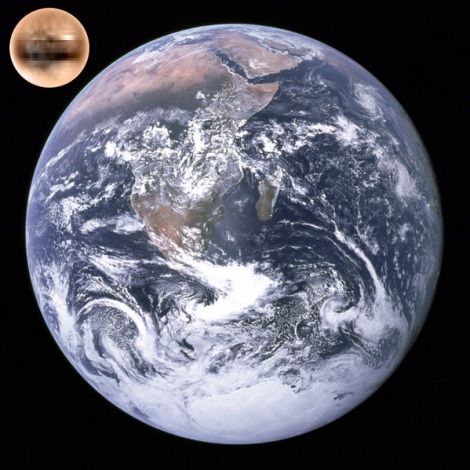Pluto used to be the smallest planet in the Solar System, but now it isn’t a planet any more, thanks to a recent decision from the International Astronomical Union. But now it’s one of the largest dwarf planets, so that’s a good thing. How big is Pluto?
The diameter of Pluto is only 2,390 km across. Just for comparison, that’s about 70% the diameter of the Moon. And it’s a fraction of the size of the Earth; about 18% of the Earth’s diameter.
In terms of volume, Pluto only has 6.39 x 109 km3. That sounds like a huge number, but it’s only 0.59% of the volume of the Earth. In other words, you could put almost 170 objects the size of Pluto inside the Earth.
The mass of Pluto is 1.3 x 1022 kg, which is only 0.2% the mass of the Earth, or 18% the mass of the Moon. Needless to say, Pluto doesn’t have very much mass at all.
The surface area of Pluto is 1.67 x 107 square kilometers. That’s only 3.3% the surface area of Earth, and about the same surface area as Russia.
If you could stand on the surface of Pluto, you would experience only 6.7% the gravity you enjoy on Earth.
We have written many article about Pluto for Universe Today. Here’s an article that explains why Pluto isn’t a planet any more, and here are some interesting facts about Pluto.
Want more information on Pluto? Here’s Hubblesite’s News Releases about Pluto, and here’s a link to NASA’s Solar System Exploration Guide to Pluto.
We’ve recorded an entire episode of Astronomy Cast about Pluto and the rest of the icy outer Solar System. You can find it here.

